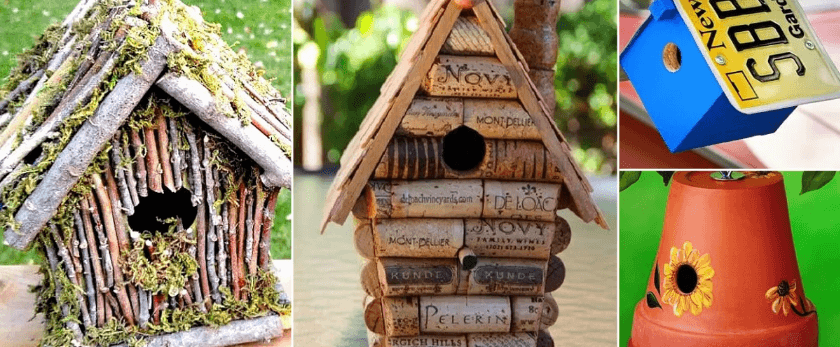Birds are an essential part of our ecosystem, providing us with natural pest control, pollination, and seed dispersal. However, with the increasing urbanization and destruction of natural habitats, many bird species are facing a decline in population. As responsible citizens of this planet, it is our duty to take care of these feathered creatures and provide them with a safe and sustainable environment to thrive in.
One way to do this is by making homemade birdhouses. Not only does it provide shelter for birds, but it also helps reduce waste and promotes a greener lifestyle. In this article, we will discuss why homemade birdhouses are a better option for the environment, what materials are needed to make them, and provide step-by-step instructions on how to make your own.
Why Traditional Birdhouses are Bad for the Environment
Traditional birdhouses, also known as nest boxes, are typically made from wood or plastic and are mass-produced for commercial purposes. While they may seem like a convenient option, they have a negative impact on the environment in several ways.
1. Deforestation
Wooden birdhouses are often made from trees that are cut down from forests, leading to deforestation. This not only destroys the natural habitat of birds but also contributes to climate change and loss of biodiversity.
2. Plastic Pollution
Plastic birdhouses, on the other hand, are made from non-biodegradable materials that take hundreds of years to decompose. When these birdhouses are disposed of, they end up in landfills or oceans, polluting the environment and harming wildlife.
3. Chemical Treatments
Some commercially produced birdhouses are treated with chemicals to make them more durable and weather-resistant. These chemicals can be harmful to birds and other animals, as well as contaminate the soil and water.
Why Making Your Own Birdhouse is Better for the Environment
Making your own birdhouse is a simple and effective way to reduce your carbon footprint and help the environment. Here are some reasons why homemade birdhouses are a better option:
1. Use of Recycled Materials
Homemade birdhouses can be made from a variety of recycled materials such as old wood, tin cans, plastic bottles, and even old shoes. This not only reduces waste but also gives a new life to these materials.
2. No Harmful Chemicals
When you make your own birdhouse, you have control over the materials used. You can avoid using chemicals and opt for natural, non-toxic materials that are safe for birds and the environment.
3. Customizable and Unique
Homemade birdhouses can be customized to suit the needs of different bird species. You can also get creative and make unique designs that add a personal touch to your backyard or garden.

What You Need to Make a Homemade Birdhouse
Making a homemade birdhouse is a fun and easy DIY project that can be done with basic materials and tools. Here's a list of things you will need:
- A sturdy base material (wood, tin can, plastic bottle, etc.)
- A saw or scissors to cut the base material
- Nails or screws to assemble the birdhouse
- A hammer or screwdriver
- Non-toxic paint or sealant (optional)
- A drill (optional)
- Natural materials for decoration (twigs, leaves, pinecones, etc.)
- A hook or string to hang the birdhouse
Step-by-Step Instructions for Making a Homemade Birdhouse
Now that you have all the necessary materials, let's get started on making your own birdhouse. Follow these simple steps to create a sustainable and eco-friendly home for our feathered friends.
Step 1: Choose a Base Material
The first step is to choose a base material for your birdhouse. You can use an old wooden box, a tin can, a plastic bottle, or any other sturdy material that you have available. Make sure the material is clean and free from any harmful chemicals.
Step 2: Cut the Base Material
Using a saw or scissors, cut the base material to the desired size and shape. If you are using a wooden box, you can also drill a hole in the front for the birds to enter.
Step 3: Assemble the Birdhouse
Using nails or screws, assemble the birdhouse by attaching the sides and the roof to the base material. You can also use a hammer or screwdriver to secure the pieces together.
Step 4: Decorate the Birdhouse
This step is optional but adds a personal touch to your birdhouse. You can use non-toxic paint or sealant to decorate the birdhouse or use natural materials like twigs, leaves, or pinecones to create a rustic look.
Step 5: Add a Hook or String
To hang the birdhouse, you can attach a hook or string to the top of the roof. Make sure it is securely attached to prevent the birdhouse from falling.
Step 6: Place the Birdhouse in a Suitable Location
Choose a suitable location to hang your birdhouse. It should be sheltered from harsh weather conditions and predators, and have easy access for birds to enter and exit.
Responsible Disposal of Traditional Birdhouses
If you already have a traditional birdhouse that you no longer use, it is essential to dispose of it responsibly. Here are some ways to do so:
- If the birdhouse is made from wood, you can compost it or use it as firewood.
- Plastic birdhouses can be recycled at designated recycling centers.
- You can also donate the birdhouse to a local wildlife rehabilitation center or a community garden.
Conclusion
Homemade birdhouses are a sustainable and eco-friendly alternative to traditional birdhouses. By making your own, you not only provide a safe and natural habitat for birds but also contribute to reducing waste and promoting a greener lifestyle. So, the next time you see a birdhouse in a store, remember that you can make a better one at home while also helping the environment. Let's all do our part in creating a sustainable future for our feathered friends and the planet.










